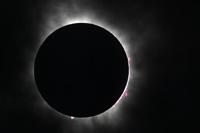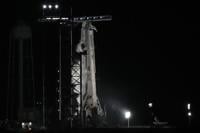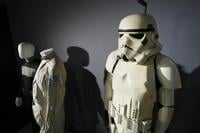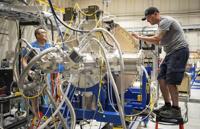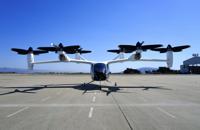FORT WORTH, TEXAS (AP) — Photographer Mat Otero has been working at the AP in the Dallas bureau for nearly 30 years. In that time, he’s covered an annular and partial solar eclipse, so he was prepared for the challenge of making a photo of the only total solar eclipse on this scale he will likely cover in his career (the next coast-to-coast eclipse in the U.S. is expected in 21 years). This is what he said about making this extraordinary image.
Why this photo
My job is to create and curate eye catching images that will draw a viewer in, communicating from my lens to their eyes and brain. That’s part of the magic of AP — our work makes a truly massive journey every day, from the field to viewers around the world.
With millions interested in such a historic and widely photographed event as this eclipse, I knew that anything I produced would need to grab attention immediately and be dispatched ASAP after the moment. We joke at AP that every millisecond is our deadline.
Our modern cameras can capture massive amounts of photos, requiring us to manage and edit for best choices in a very fast fashion. In the minutes and seconds before the eclipse, clouds flowed in and out. I thought I was going to get skunked and have nothing. Ultimately the clouds opened, parting for a few minutes and allowing the light into my camera to make this photo.
How I made this photo
Leading up to the eclipse, I had illustrated an AP story about research at the Fort Worth Zoo into how animals react to the darkness, so it was decided to position me there for the actual eclipse. We were just inside the edge of totality, so the event was going to be a little bit faster than locations near the center of its path across the country.
I have an assortment of neutral density filters because I had previously photographed an annular eclipse, when the moon is farther away in its Earth orbit and therefore doesn't block the entirety of the sun. An “annulus” of bright sunlight rings the moon, but the spectacular corona isn't visible as it would be during a total eclipse. This time, I used the filters to make a solar optical filter for use with a new 200-600mm lens — that would be my primary camera. I also had wide and mid-range angled cameras, both mounted on a tripod to be trigged by remotes.
I read as much as I could about photographing a total eclipse. I ran tests with gear, shooting position and sun placement. A sun tracking app was a useful guide for where the sun would be in the sky. Because the sun was at such a high angle above, I decided the best position was to lay flat on my back looking up. I practiced laying on a yoga block and mat holding a long-lensed camera and keeping as still as possible.
Seeking to get the lushest look out of the camera and reducing the possibility of digital noise, I chose to photograph at a slower shutter speed (1/50 of a sec.) and ISO (160) with a 6.3 aperture to better show possible solar prominences — the reddish trails of plasma that loop off the sun’s surface.
Yoga mat in tow, I made sure to pack a small lunch for myself and a reporter working our spot in the Zoo gallery. As totality moved in, there were a couple of technical issues that needed working out: changing to a hard wire when my remote did not work and repositioning the tripod to frame the sky — where’s the sun again? I sometimes describe my job as looking through a straw and now it’s also on a cloudy day.
I had read and talked with other photogs about how fast the light-burst phase of the eclipse would pass but, wow, was it faster and more dazzling than I expected.
I might have audibly gasped as I “prayed and sprayed,” firing frames and watching the ever-changing light. I even said to myself aloud, “You can see the fire.” Thankfully, the clouds stayed open long enough to allow a good look. As soon as the giant shadow passed over, I tagged my possible best photos in the camera, then ingested them into my laptop for a quick edit and dispatch to the photo desk editors.
Why this photo works
Visual communication can be timeless, needing no translation. This photo captured a fraction of a second in time, showing wisps of solar energy and light fighting to get around the dark side of the moon. It feels like a secret look into the cosmos and the celestial dance of the Earth, moon and sun, all running rings around each other at incomprehensible speeds. The photo reminds me of ancient Native American rock art, depicting the solar eclipses our ancestors watched, just like us.
___
For more extraordinary AP photography, click .


